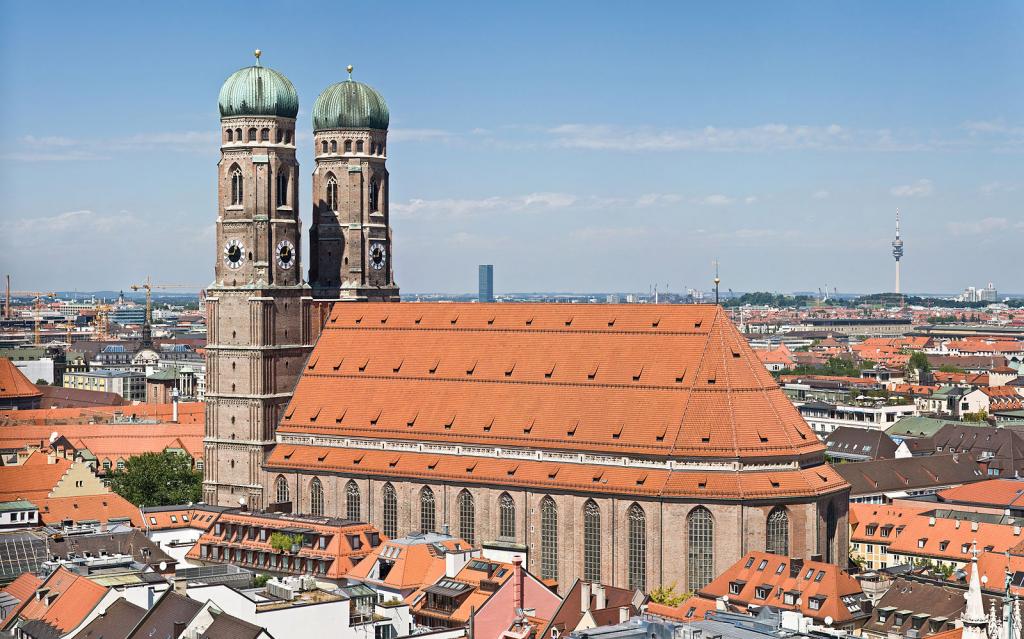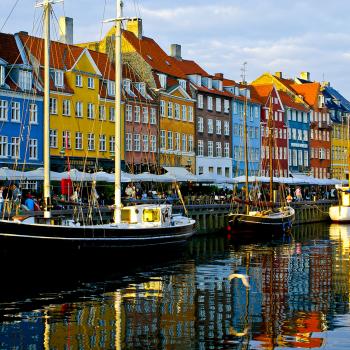![https://commons.wikimedia.org/wiki/File%3AAutobahn_A8_bei_Holzkirchen.JPG; By Joe MiGo (Own work) [CC0], via Wikimedia Commons](https://wp-media.patheos.com/blogs/sites/533/2016/07/800px-Autobahn_A8_bei_Holzkirchen.jpg)
You can’t help but notice the European roads — smooth as a baby’s bottom. Well, except for a stretch of roadway on the former East German island of Rugen, 10 years ago, which was paved in brick, not as a bit of a decorative touch for the downtown, but as a cost-effective rural road. It’s also the case that the Germans, anyway, build their roads in asphalt rather than concrete, and I’d never understood why.
So based on a reader comment, I googled US concrete Germany asphalt, and up popped a Time Magazine article from 2001 (apparently it’s not such a burning issue as to have had much written more recently), “Why America Has So Many Potholes.”
Some key differences that the article noted:
[M]iles of smooth-riding, durable autobahns and auto routes put American roadways to shame. European highways actually carry more traffic and considerably heavier truck weights than U.S. roads, yet they are smoother and far sturdier. European highways are designed by their builders to last 40 years; the projected life of American roads is half as long.
Why has the world’s highway Goliath become the superpower of potholes? A major reason is that in its haste, America built on the cheap. Across the nation, state and local governments have tended to award competitive contracts to the lowest bidder, often meaning they got the shoddiest materials and the sloppiest work. In addition, the Federal Government has encouraged neglect by subsidizing new construction or major restructuring at 90 cents to the dollar but awarding no subsidies for maintenance work. One expert likens it to not reimbursing drivers for the cost of changing oil in their cars while paying 90% of the price of a valve job. “The attitude was the faster it crumbles, the faster we’ll get brand-new,” says New York Senator Daniel Patrick Moynihan, a stalwart highway watcher. Moreover, maintenance is unglamorous. “Nobody ever had a ribbon-cutting ceremony for fixing cracks,” notes Moynihan. . . .
Given the emphasis on new construction, U.S. highway designers have badly neglected research and development, which might have kept the roads abreast of mounting traffic. “For many years, the Department of Agriculture spent more % researching dog food than the Department of Transportation did on highways,” says Thomas Deen, executive director of the Transportation Research Board. Europeans routinely spend 20 times as much per capita on R. and D. . . .
American contracting procedures discourage the use of novel techniques. In Europe, governments dictate only how long a highway should last under what conditions, and contractors are left to their own devices to deal with the challenge. In the U.S., contractors must meet an avalanche of government specifications on materials and procedures but are not required to guarantee the road’s performance. “The Europeans create a contract climate that stimulates innovation; here we squash it,” laments Douglas Bernard, director of the Office of Technology Applications in the Federal Highway Administration.
And the article doesn’t even mention the fact that American, or at least Illinois highway construction, has always been a prime source for graft and “pay-to-play” corruption.
On the other hand, a Michigan news source, mlive.com, reported in 2014 on a test stretch of highway in Michigan built to German specifications and costing twice as much, with the hope that it’d last twice as long.
Within two years, both sections had superficial cracks. Twenty years later, “there is no clear indication as to which pavement section will eventually achieve the most cost-effective service life,” an MDOT study said. It noted, however, that the European section was showing signs of wear, with some of the concrete surface “delaminating,” or separating, possibly due to water freezing and expanding, the same destructive cycle that plagues Michigan’s roads.
But that’s only part of the story.
Based on Wikipedia stats on roadway length and population, Germany simply has much less pavement to maintain, on a per-capita basis. Considering roadway length as a whole, the U.S. has 2 1/2 times as much (OK, the factor is 2.57 to be precise), and considering highways only, 1.5 times as much, and that’s not even taking into account that, for a given length of roadway, the typical U.S. street has more and wider lanes. That’s a huge difference, and means that it’s far more costly for the US to maintain its roads.
Why? German is a far more dense country, without anything comparable to the American West with vast scantly populated areas. Plus, within cities, the density is much greater, as single-family homes are rare and past history and current zoning mean that most people live in multistory apartment buildings — all of which means that the footprint of any given city is much, much smaller than a similarly-sized American city, which also means, in turn, that mass transit is, quite simply, substantially more viable, as it requires, not just political will, but a significantly greater level of density than most Americans consider acceptable. And this also means that the roads themselves, even major crosstown arteries, generally have fewer lanes, so there’s less total paved surface per kilometer.
Oh, and in rural areas, there are even roads which are effectively one-lane roads widened periodically for passing purposes.
So that’s what I know. Your thoughts?
image: https://commons.wikimedia.org/wiki/File%3AAutobahn_A8_bei_Holzkirchen.JPG; By Joe MiGo (Own work) [CC0], via Wikimedia Commons

















